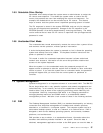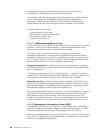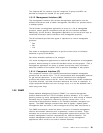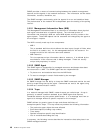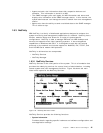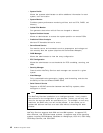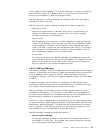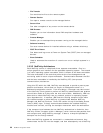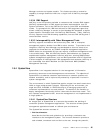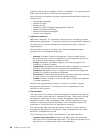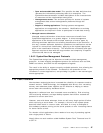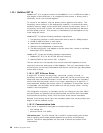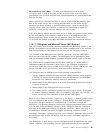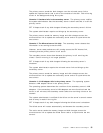Manager services and system module. This feature provide an extensive
capability to merge dissimilar LANs into a single view of NetFinity managed
assets.
1.9.3.4 DMI Support
NetFinity is the first product available to customers that includes DMI support.
NetFinity implementation of DMI support provides instrumentation from its
System Information Tool to the DMI service layer for both OS/2 and Windows
clients. To accomplish this, IBM has delivered a DMI component agent that
allows a NetFinity Manager to access a client desktop MIF database to deliver
system specific information back into NetFinity DMI Browser. Today, NetFinity
not only supports local DMI browsing capabilities, but also DMI alerting and a
remote browser service.
1.9.3.5 Interoperability with Other Management Tools
NetFinity supports coexistence with almost any other LAN or enterprise
management product, whether from IBM or other vendors. To provide for this
integration, NetFinity Alert Manager was developed to allow its alerts to be
captured and forwarded into any SNMP compliant management application.
SNMP alerts are recognizable by the vast majority of different management tools
in the market today. With this NetFinity feature, administrators can integrate
sophisticated systems management functions with their existing SNMP-based
systems management applications, such as IBM SystemView and HP OpenView.
In direct support of heterogeneous LAN management environments, NetFinity is
also launchable from within NetView for OS/2 and Novell NMS (NetWare
Management Services).
1.9.4 SystemView
SystemView is an integrated solution for the management of information
processing resources across heterogeneous environments. The objective of
SystemView is to address customer requirements to increase systems and
network availability, and to improve the productivity of personnel involved in
system management.
The environments in which SystemView applies ranges from small stand-alone
LANs to large multiprocessor systems. Depending on the environment, you
might see OS/2, AIX/6000, or VM/ESA acting as a managing system with a
consistent implementations on each platform. The benefit is the flexibility to
deploy management functionality where it best suits the business needs. This
also reduces management traffic, since the management is not implemented on
a single platform.
1.9.4.1 SystemView Structure
An integral part of SystemView is a structure that enables the building of
consistent systems management applications. The structure allows system
management applications based on defined open architectures.
The SystemView structure consists of:
1. End-Use dimension
describes the facilities and guidelines for providing a consistent user
interface to the management system. The end-use dimension provides a
task-oriented, consistent look and feel to the user, through the powerful,
Chapter 1. IBM PC Server Technologies 45



